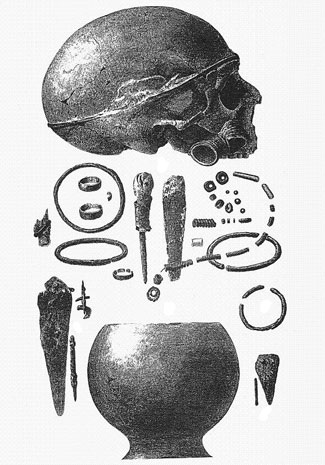Women's identity in the Age of Bronze

Discussions on social equality and inequality have occupied a central position in the Social Sciences and the Humanities. Archaeology is a clear example since it seeks to understand how the human beings of the past we study lived and interrelated. To approach this complex enterprise we need to draw out the social context of these interrelations and determine the extent to which and circumstances under which equality and inequality were present among them.
Related to this topic and using archaeological mortuary evidence from El Argar Culture (2nd millennium BC in the south-east of the Iberian Peninsula), the present paper studies three main subjects:
1-Transversal equality. It refers to the fact that, under circumstances of social inequality, one person may exhibit aspects of social equality and inequality to another. This is only feasible if we consider persons not as close entities but as open and dynamic networks of relationships. According to this perspective, any person exhibits aspects of egalitarian and non-egalitarian relations with another person.
2- In the case of Argaric societies, transversal equality seems to affect mainly to women, as indicated by their funerary grave goods. Despite the hierarchical asymmetry of the funerary assemblage, women's tombs often present a characteristic element, the awl, which only appears in female graves. Unlike furniture exclusive of male tombs, the awls are the only tool ascribed to a particular gender to be found during the entire Argaric period, to be present in girls tombs, to appear most frequently in non-funerary domestic contexts and to be found in any female tomb regardless of the quantity or quality of the rest of the offerings. Such a material continuity indicated by the awl may be related to the very self-perception that Argaric women had, their identity and what meant to be a woman in such societies. The awl is therefore an element that emphasizes transversal equality.
3- Women's identity was related at the same time to the type of practices carried out by them, to the kinds of social relationships needed for these practices and to an understanding of reality derived from this. A series of studies in the fields of psychology, anthropology and communication have highlighted the fact that personal identity is forged by a variety of mechanisms, of which two are the most important, resulting in a relational identity or an individual identity. In the first case, identity develops from relationships with others. In the second case, identity develops from experiences and practices unique to the individual in the process of being separated from these primary relationships. Funerary grave goods seem to indicate that Argaric women would develop their identity following the first mechanism and would use the awl to symbolically express it in the tombs.
Universitat Autònoma de Barcelona
Professora d'Investigació ICREA
References
"Interpreting archaeological continuities: an approach to transversal equality in the Argaric Bronze Age of south-east Iberia" Sandra Montón Subías (2007) World Archaeology 39 (2): 246-262.

